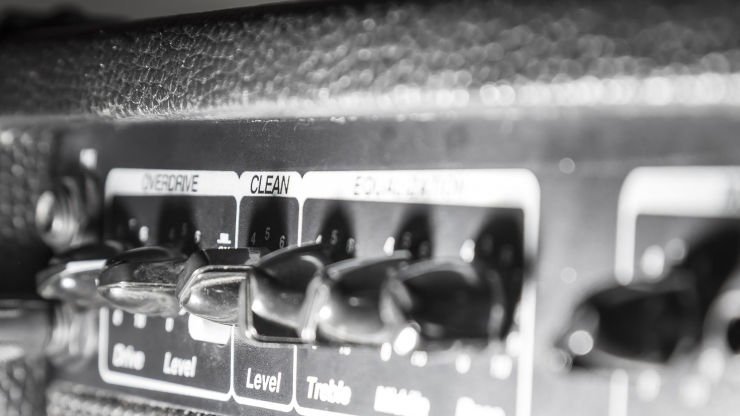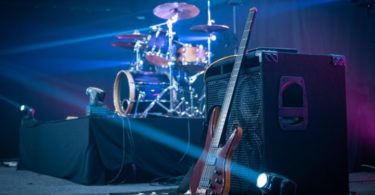There’s a lot out there, from detail-oriented control preamps to DI options to overdrive monsters. I will to run down what to look for in a preamp and then go through what I think are the top choices for any bass player to consider.
I have years of experience with both guitar and bass, with a focus on the electric versions of both instruments. On top of that, I spend upwards of 20 hours of research for this guide.
There are several reasons to want a preamp for your bass playing, so I’ve tried to research the market to see what options are best for different roles. My goal was to search through not only product listings, but also detailed descriptions of what makes a great bass guitar preamp, how they differ, and which ones might be appropriate for people with different needs.
Even if you don’t pick a preamp from my list, you should at least be able to learn about your options and get informed about what will work best for you. I know how important it is to not just find the right preamp, but also make sure it fits into the rest of your signal chain and contributes to your overall sound.

Credit: Empress Effects
Top Pick: Empress ParaEQ
Durable, with adjustable band width, two stomp buttons, boost and bypass. You can break down the signal into high, mid, and low for precise tone control.
What To Know Before Buying
Types of Preamps
I don’t think it’s worthwhile to spend much time on the history of the electronics inside preamps. The most important thing to know is how they are constructed today and what options are available. To that end, there are three primary types of preamps.
Two-Band Boost – This type has control for the treble and the bass ranges, lacking one for the mids. Those are the two bands. The “boost” refers to the fact that they can only increase the signal power in those ranges, not reduce it.
Note that boosting both the treble and bass is roughly equivalent to cutting the mids anyway, so this style gives you more control than you might expect. This is the original type of preamp.
Two-Band Boost and Cut – These are the same as the first type, but they allow you to reduce signal strength in the highs and lows in addition to boosting it.
Three-Band Boost and Cut – perhaps the most popular, especially in the upper tiers of preamps. This style has the most direct control: you can either boost or cut all three regions of tone, the highs, mids, and lows.
There are alternative types, such as a four-band preamp that breaks down mids into high-mids and low-mids, but they are not mainstream and are generally limited to special cases.
Interaction with Other Gear
Preamps are not used in isolation. They shape your tone before it hits the amp, so that means they are usually the first piece of gear to affect the source signal. That means they have a huge effect on your sound.
This can get complex, especially if you have an active bass. That means you technically have a preamp onboard the bass itself, so that will shape the sound before it even hits your preamp pedal. Many amps have built-in preamps as well. That gives you up to three preamps at the same time, which might seem redundant.
There are good reasons to buy a preamp pedal even if you already have an active bass and a preamp in the amp. The first one is that you may want to switch to a different bass during a show or other playing session.
If you have a pedal preamp, then you can adapt your tone independently of an in-guitar circuit. And your pedal might have more detailed controls than the preamp on your guitar. That would give you the ability to make finer adjustments. It is also possible that you just like the combined effect you can get by using all of your options at once.
The bottom line is that you can and many people do get a good tone using only the preamp in their bass, but you do more and open up more variety of sound if you also incorporate a pedal. They are complementary, not redundant.
Roles for Preamps
There are several different ways you can use preamps to support your play, and these different roles should inform your decision about which one to buy. This will also determine how your choice will interact with your other gear.
Don’t forget about the impact a preamp will have on any other pedals and EQ controls on your amp. When you add a new preamp, your entire signal chain will change downstream of it. Keep that in mind as we talk about the different uses for a preamp.
First of all, you can the use a preamp to fix problems related to specific conditions, like the venue where you are playing or the recording studio. Each room has its own effect on your sound. Some tend to make your mids pop, while others can suppress your bass.
If you notice an effect like this taking place, then it is a good idea to use your preamp to cut or boost the relevant range to compensate. The more detailed the preamp is, the more carefully you can make adjustments.
Preamps are also great to help you transition from one bass to another within a gig. When you swap from one bass to the next, you might need very different tone shaping settings to get the effect you want. Being able to just step on the preamp to make the switch to the correct settings is much easier and faster than adjusting your amp.
Preamps can also help you overcome feedback by cutting it out, although you probably need one with precision and delicate gradations so you can pinpoint the feedback.
The Competition
After hours of testing and research, here's the final competition.
| Instrument | Rating | Current Pricing |
|---|---|---|
The Empress ParaEQ | wide range of control over signal changes |  |
Tech 21 VT Bass DI | Ability to make some quirky and cool tones |  |
Darkglass Microtubes B7K Ultra | DI functionality |  |
Two Notes Le Bass | its own tube and two separate channels |  |
RMI Acouswitch | fine controls and tone delivery |  |
ISP THETA | complex and overlapping set of controls to craft some interesting tones |  |
Our Recommendation: The Empress ParaEQ

Credit: Empress
In my opinion, the best available value lies in the Empress ParaEQ, a highly flexible and inexpensive pedal. It has three bands and loads of options.
First of all, you can adjust how wide each band is. That means you define how much of the tone the bass knob affects, for example. You can cut or boost any of those adjustable bands separately. That is a huge amount of control at a detailed level, which means you can use this preamp in several different roles and expect it to perform well.
There are two convenient stomp buttons. One is a bypass that will effectively pull the Empress out of your signal chain. The other is a clean boost without gain. Both of these have situational uses. The bypass is more likely to come in handy but even if you do not use them often, there will be moments when you need a boost or a bypass.
The biggest asset of this preamp is that high degree of control. You can shape your tone quite precisely by first determining how the preamp breaks down the signal into high, mid, and low, and then telling it what to do with each of those segments.
Overlap is possible. That gives you so much freedom to control how the preamp changes the signal that you will not have much trouble finding the perfect set of choices for your play.
It isn’t easy to find that degree of freedom and when you do, you often need to pay a lot. However, the Empress will run you 
It also comes with significant durability: the designers clearly had touring in mind. In fact the whole design of the pedal is player-centered, from the positioning of the stomp buttons to the layout and labeling of the knobs.
The Empress ParaEQ ticks all the right boxes and it delivers excellent value thanks to its price tag. It’s hard to find a better option that is such a complete package.
Runner Up: Tech 21 VT Bass DI

Credit: Tech 21 USA
My second-favorite bass preamp is the Tech 21 VT Bass DI. It works a little differently from the Empress. Instead of giving you the finest control possible, the advantage of the Tech 21 is that it is a DI box, so you are passing most of the control over your tone to the console.
This is excellent for recording as well as for playing gigs that have a powerful PA system. Sound techs have a much easier time using their console to mix tones that come from a DI preamp. It is not quite suitable for the traditional roles that preamps play because on its own it won’t do a whole lot to the signal.
It does have a three-band set of knobs along with character and overdrive knobs for more flavor. The idea is that this preamp, which is based on the SansAmp Bass Driver DI, can essentially replace the rest of your signal chain and your amp, giving you the same sound output but with much less time, effort, and money spent on your gear.
It has the ability to make some quirky and cool tones if you put time into it, although it won’t match the full capabilities of the Empress. If you do manage to substitute the rest of your rig for this box, then the value is huge.
It only costs about 
Other Contenders:
In this section, I’ll run down some other preamps that you should check out. For one reason or another, these all fall a little short of the top two, at least in my opinion, but they might have a feature set that appeals to you.
I would consider any of these a good choice if it fits your needs, so even though I don’t consider them on the level of the ParaEQ or SansAmp take a look and see if any of these appeal to you.
Darkglass Microtubes B7K Ultra

Credit: Darkglass Electronics
First, the Darkglass Microtubes B7K Ultra. A lot of people love this preamp. It offers you a lot of control. Not quite as much as the Empress, but close, and it has a secret weapon: overdrive. This is perhaps the best overdrive preamp out there for bass. It also has DI functionality.
However, it is pricey. Expect to pay on the order of 
TC Electronic Spark Booster

Credit: MUSIC Group Innovation DK A/S
Next, the TC Electronic Spark Booster. This is technically a guitar preamp, but it works well for bass as well. This is my budget pick. It costs around 
It comes with True Bypass for a completely inert treatment of the signal when necessary and some basic but useful tone controls. There’s a simple 2-band circuit along with a gain knob, level, and a character switch that gives you some more options for tone. It won’t knock your socks off with its sound or give you a ton of choices, but the value is amazing.
Two Notes Le Bass

Credit: Amazon
Third, look at the Two Notes Le Bass. At 
It has a very offbeat approach. The preamp has its own tube and two separate channels, a clean one and an overdrive one. The preamp also has two separate modes: cold and hot. In Cold mode, the two channels get blended together for a familiar tone.
Hot mode gets a little crazy: the two channels get stacked on top of each other, producing a potentially huge overdriven sound. You get True Bypass, MIDI, FX Loop Return, and channel-specific stomp buttons.
RMI Acouswitch

Credit: Ruppert Musical Instruments
Fourth, the RMI Acouswitch. It is a high-end DI preamp that will run you 
In fact, it is one of the best DI preamps available. It is tough to get past the price tag, but if money is no object and you know DI is important to you, then seriously consider the Acouswitch for its fine controls and tone delivery.
ISP THETA

Credit: Amazon
Fifth, the ISP THETA. This is another big preamp, costing 
This is a gain specialist preamp, so if you want to see what you can do with different types of overdrive, give the THETA some attention. It has a complex and overlapping set of controls that can help you craft some interesting tones, from heavy thump to sharp and crunchy. This is another expensive experiment that just might pay off if you find your dream OD tone.








Start the discussion at talk.hearthemusicplay.com